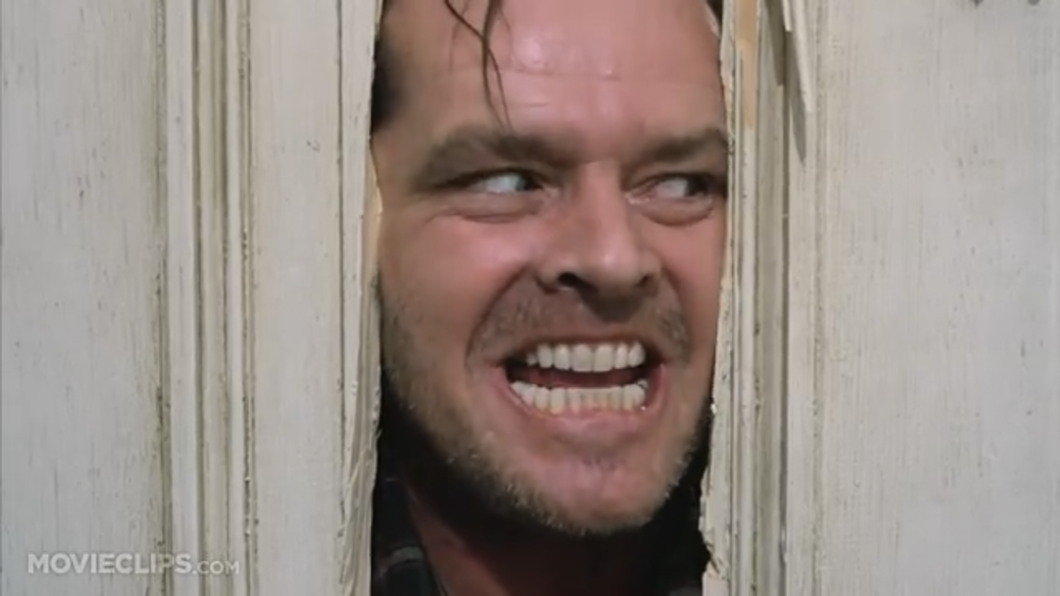Stanley Kubrick's adaptation of the book, "The Shining" by Stephen King, has moments that comprehend humanity, as the direction of montages and psychotic shots allow whispers of horror throughout the film. I believe the director paced this movie in a chilling manner. The movie starts out at a slow pace introducing all the characters and showing sneak peaks of some unusual scenes that take place in the hotel. This type of pacing sets the atmosphere for the audience, as it shows that something cognitive, and dark is coming near to the plot. As the movie goes on, a lot of shots are shown that involve, gore, children, rotting skin, and blood, which adds on to the pacing of the film.
The director created this movie in light of the book at a very atmospheric tone, to allow the audience to have to think and figure out the movie and its meanings. The eerie soundtrack and striking direction allow the director to show a new type of horror to moviegoers and that it does not always have to be about jump scares or demons, but can be shown through the insanity of one person's mind. Furthermore, the score of this film was stellar, as it used many grinding noises that allow more depth to the scenes, and it creates a tighter hook between the audience and the insanity that the film has.
As some scenes had particular music that could drive someone crazy, which shows irony towards the film. The colors of the film were at a dull pace but had some flashes of color and pattern that stood out, such as the carpet patterns in the halls of the hotel that resembled an optical illusion, which pop out and grab the audiences eye.
Another subject the movie excels in is the leading line shots within the movie. For example, in a particular scene between one character and two other characters within a hallway, the camera is panned in a formation that resembles an infinite hallway. This creates a sort of abyss imagery that signals the audience to understand that the shot is shown to describe how insanity can last for however long it is needed. One of the most successful visual aesthetic manipulations in the film is a scene that involves an elevator gushing with blood the minute it opens and flooding the hallway with blood.
The scene allowed the movie to reach its peak when it came to the atmosphere, as the blood had almost a silent ambient tune as the blood was moving out of the elevator in slow motion. The silence created a void within the scene and raised curiosity as the blood flowed throughout the ground and walls and showed how silence and confusion can be terrifying at moments the involve a darker image such as blood. The scene just rejuvenated the creepiness that the movie had to offer, which sent shivers down my spine.
Another scene that was successful through its visual aesthetic manipulations was when a character axes his way into a door, while the subject behind the door has a frightening facial expression. The scene was executed perfectly as a thriller, with the elevating music and frantic screeches and the dialogue being bizarre (quotable and iconic) and frightening. Overall, the movie was crafted at a unique sense through horror, with a different perspective on what's really frightening to audiences.
9/10









































